Springbok Profile
There are around 80 species of antelope in Africa, ranging from the large and highly endangered Hirola to the tiny and successful dik-dik and Royal antelope. In many cases, size is a disadvantage. Humans are the main cause of decline on the continent, as they are all over the world, and a large animal is easier to kill.
But some promising little species go against the tide, and the Springbok is one of them. With populations on the rise, this tenacious little bovid is putting other species to shame.
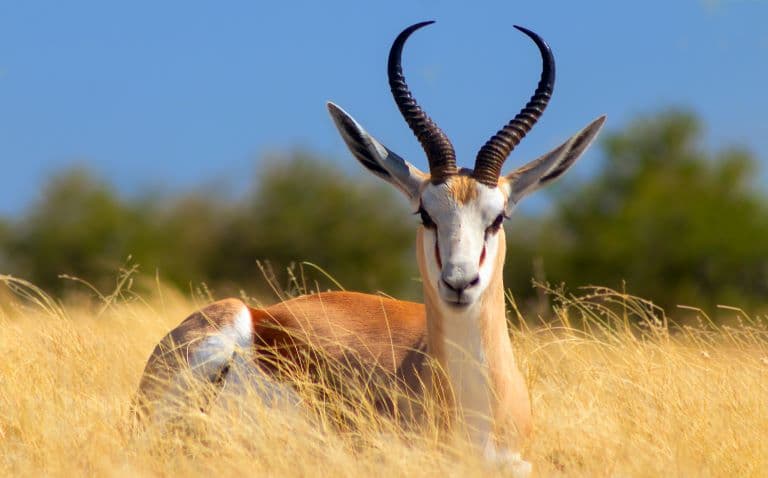
Springbok Facts Overview
| Habitat: | Savanna, shrubland, grassland, desert |
| Location: | Southern Africa |
| Lifespan: | Around 10 years in the wild, up to 20 in captivity |
| Size: | 86 cm (34 in) at the shoulder |
| Weight: | 42 kg (93 lb) |
| Colour: | Tan brown on top, creamy white underneath |
| Diet: | Succulent grasses |
| Predators: | Caracals, cheetahs, leopards, spotted hyenas, lions and wild dogs |
| Top Speed: | Possibly up to 80 km/h (50 mph) |
| No. of Species: | 1 |
| Conservation Status: | Least Concern (IUCN) |
Springbok look a lot like gazelles but are a slightly different lineage. They’re distinct from all other antelope and remain the only species in their genus. With that uniqueness comes features that can’t be found anywhere else. A weird alien scent pouch on its back, speed that can make a cheetah wonder if it’s worth it, and the ability to leap directly up into the air with all legs held out straight for some reason.
Interesting Springbok Facts
1. They’re not true gazelles
Marsupials are so-named after their pouches, known as marsupium in Latin. Springboks, unlike gazelles, have a similar such pocket that lines the middle of their backs and is used in mating displays.
This pocket is essentially an opening flap of fur and skin that hides vivid white pelage and an important scent glad for the animal, and this is one of the things that sets it apart from true gazelles.
2. They’re pronkers
Their common name refers to this animal’s ability to jump. Springbok can leap over two meters into the air from a standstill, and this popcorn-like behaviour is known as pronking.
Essentially it involves a stiff-legged jump, directly up, and can be a sign that an animal is either too fit and healthy to bother chasing, or too fit and healthy to turn down for sex.
Pronking comes from the Afrikaans word “to show off”, and in this instance is entirely apt.
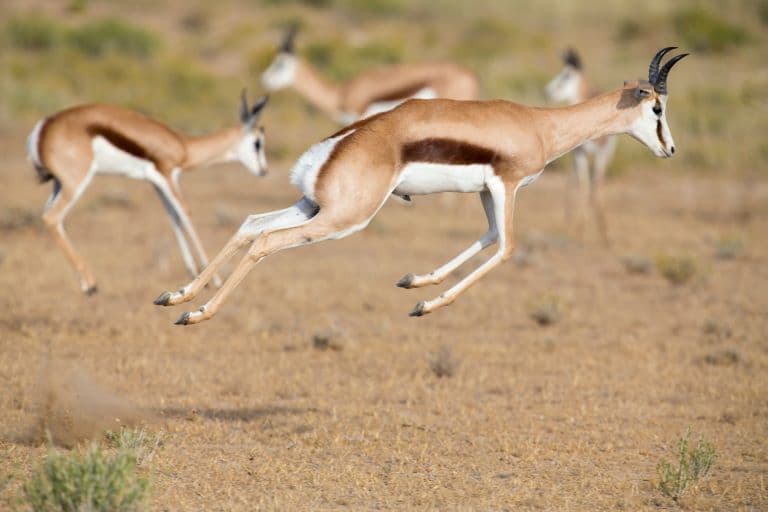
3. Pronking for mates
This pronking is often done just for show and is brought out a lot in mating contexts, as a way to demonstrate the vigour and survival skills of a potential mate.
It appears as though there’s some scent-marking benefit to repetitive pronking too, as it opens up a gland on the animal’s back, releasing an aroma that’s said to resemble candy floss. This might be a great way to propose a little sugar to the ladies in return for attention.
This gland is surrounded by a plume of fur and runs up the back of the antelope from the tail to just behind the shoulders. When released, this plume opens up to reveal a bright white stripe along its back.
It also looks like a lot of fun, and Springboks seem to do it for that reason too.
Pronking may be used while being chased, as a way of disorienting the predator, but these antelope are hard enough to catch as it is. 1
4. They’re fast
Not many will take on a Springbok in a race. They’re known to reach speeds of up to 80km/h (50mph), perhaps even faster, and hunters know this.
They’re generally ignored on account of them being so impossible to get hold of, but they are prone to attack from cheetahs, hyenas, pythons, wild dogs and other notorious predators, especially when they’re in their infancy.
5. They don’t need to drink water
Springbok are able to retain water exceptionally well, but they can also gather enough hydration from their diet of succulents that they can survive indefinitely without water.
This is yet another adaptation to the arid environments that sets them apart from a lot of larger animals and has led to this species doing better than most in a deteriorating ecosystem. 2
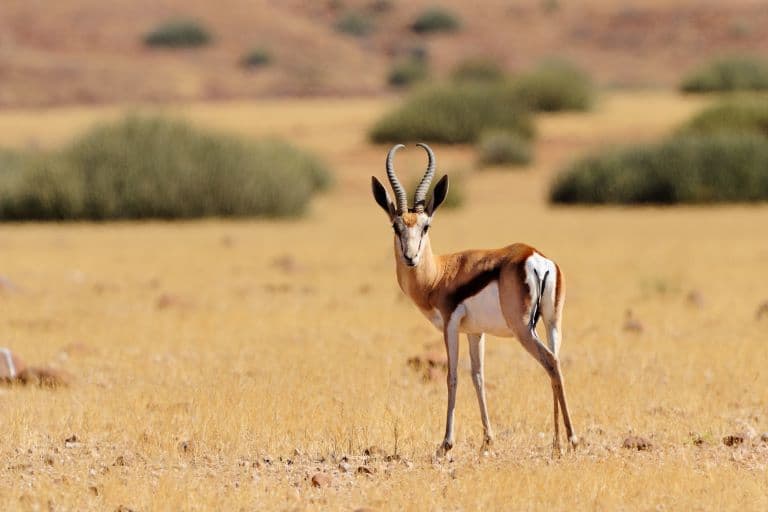
6. They’re doing great!
Springbok live in a lot of protected areas, which does the species a lot of favours. As fast as they are, they can’t outrun a bullet and human hunting is one of the only reliable predation threats for the species.
But this is an antelope whose population is actually thought to be increasing, making it a very successful animal and showing its resilience where other species are struggling. It’s thought that about 60% of its population live on private lands, which means there’s little chance of damage in coming years, at least. 3
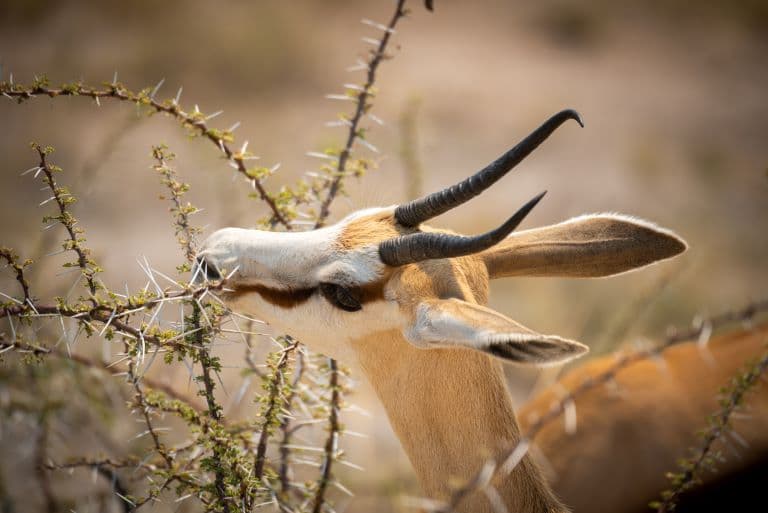
7. But they were once part of an epic herd migration
European settlers described Springbok treks, called “trekbokken” that once occurred over vast swathes of the Kalahari and other regions and involved countless thousands, perhaps hundreds of thousands of springboks, apparently migrating en masse.
Then, around 1896 to 1897, they stopped. With a lack of scientific recording of the phenomenon and a deep inaccuracy from local sources, it’s hard to know why or how this event occurred or why it no longer does.
Some researchers are on the hunt to record indigenous accounts to figure it out, but as of today it remains a bit of a mystery. 4
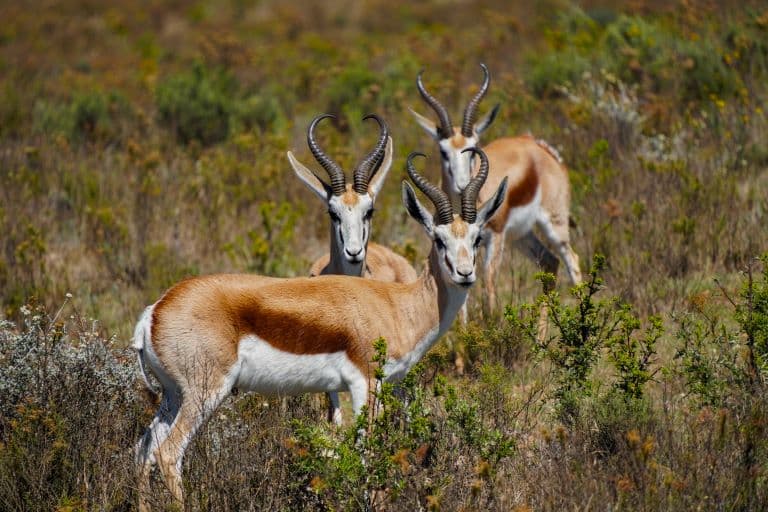
Springbok Fact-File Summary
Scientific Classification
| Kingdom: | Animalia |
| Phylum: | Chordata |
| Class: | Mammalia |
| Order: | Artiodactyla |
| Family: | Bovidae |
| Genus: | Antidorcas |
| Species: | marsupialis |
Fact Sources & References
- R.C. Bigalke (2015), “Observations on the Behaviour and Feeding Habits of the Springbok, Antidorcas Marsupialis”, Taylor & Francis Online.
- Kenneth A. Nagy (1994), “Energy, Water, and Food Use by Springbok Antelope (Antidorcas marsupialis) in the Kalahari Dese”, Oxford Academic.
- “Springbok”, IUCN Red List.
- Chris Roche (Year), “’The Springbok … Drink the Rain’s Blood’: Indigenous Knowledge and Its Use in Environmental History — The Case of the /Xam and an Understanding of Springbok Treks”, Research Gate.
